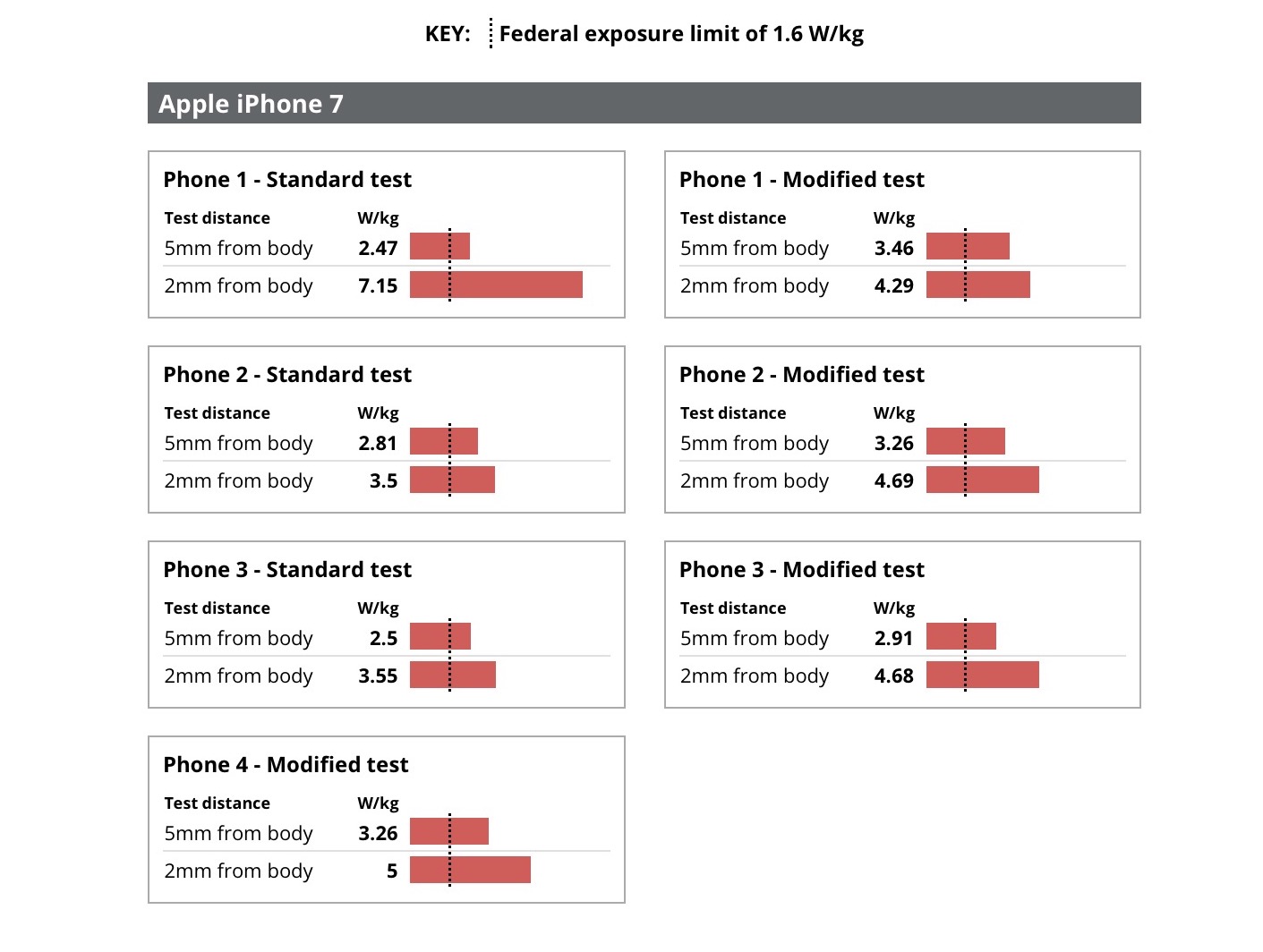FCC to Investigate After iPhone 7 Tests Above Legal Radiation Level Limits
 Credit: AS photo studio / Shutterstock
Credit: AS photo studio / ShutterstockToggle Dark Mode
A recent investigation into smartphone radio-frequency (RF) radiation has found that certain iPhone models are emitting levels exceeding safety limits.
The Chicago Tribune on Wednesday published the results of a test into RF radiation carried out by an accredited lab. While not all of the iPhones the lab tested exceeded legal limits, one of Apple’s devices was among the worst offenders.
The Testing
The Chicago Tribune tested 11 popular smartphone models by securing them below clear liquid to simulate human tissues while a probe tested the amount of RF radiation the liquid was exposed to. Based on the lab’s testing, several iPhone models actually tested beyond legal safety limits.
The iPhone 7 was the worst emitter. Its RF radiation levels were over the legal limit — and actually more than double the levels Apple reported to regulators when it submitted its own testing.
Other iPhones fared better. The iPhone X and iPhone 8 were only slightly over the limit in some testing, while the iPhone 8 Plus stayed within regulatory limits.
The newspaper then contacted Apple with the results, who indicated that they should redo the test with additional steps that “activate sensors designed to reduce the phones’ power.”
After the modified tests were carried out, the iPhone 8 tested below legal safety limits. But the iPhone 7 still did not.
The Tribune also tested other popular smartphone models by OEMs like Samsung, Vivo and Motorola. Many of those devices also tested above legal safety limits.
Apple’s Response
While Apple asked The Chicago Tribune to carry out additional testing, it actually declined to be interviewed before the publication of the story. In a statement that it shared later, Apple contested the results.
“All iPhone models, including iPhone 7, are fully certified by the FCC and in every other country where iPhone is sold,” the statement read.
“After careful review and subsequent validation of all iPhone models tested in the report, we confirmed we are in compliance and meet all applicable … exposure guidelines and limits.”
In other words, Apple said the testing was done incorrectly and the results were inaccurate — but the company did not detail how. That’s true for both the first round of testing as well as the second round of modified testing that Apple asked for.
What This Means for You
We’ve previously covered some of the misconceptions about smartphone radiation and the danger it poses to users. In a nutshell, your smartphone is probably a lot less harmful than you think.
But legal safety limits are there for a reason. And the fact that Apple’s iPhone 7 might surpass those limits is concerning.
It’s worth noting that the testing was carried out in a way to simulate the worst possible conditions: the phones were operating at full cellular power. That just doesn’t occur for most consumers except in very specific circumstances, such as talking continuously in an area with poor reception.
Still, if you’re concerned about smartphone radiation from your iPhone 7, we recommend keeping your iPhone away from your body as much as possible and using a hands-free option when speaking on the phone.
This isn’t the first time that the iPhone 7 has popped up on a list like this. After testing by a German regulatory office, the iPhone 7 ranked 9th in a list of the worst smartphone radiation emitters.
All smartphone makers are required to test their devices for RF radiation and submit their results to regulators before they go on sale. But The Tribune notes that only one device needs to be tested and the OEM gets to pick the lab.
In the wake of The Chicago Tribune story, the Federal Communications Commission said that it would carry out its own testing on the specific devices that were tested.







